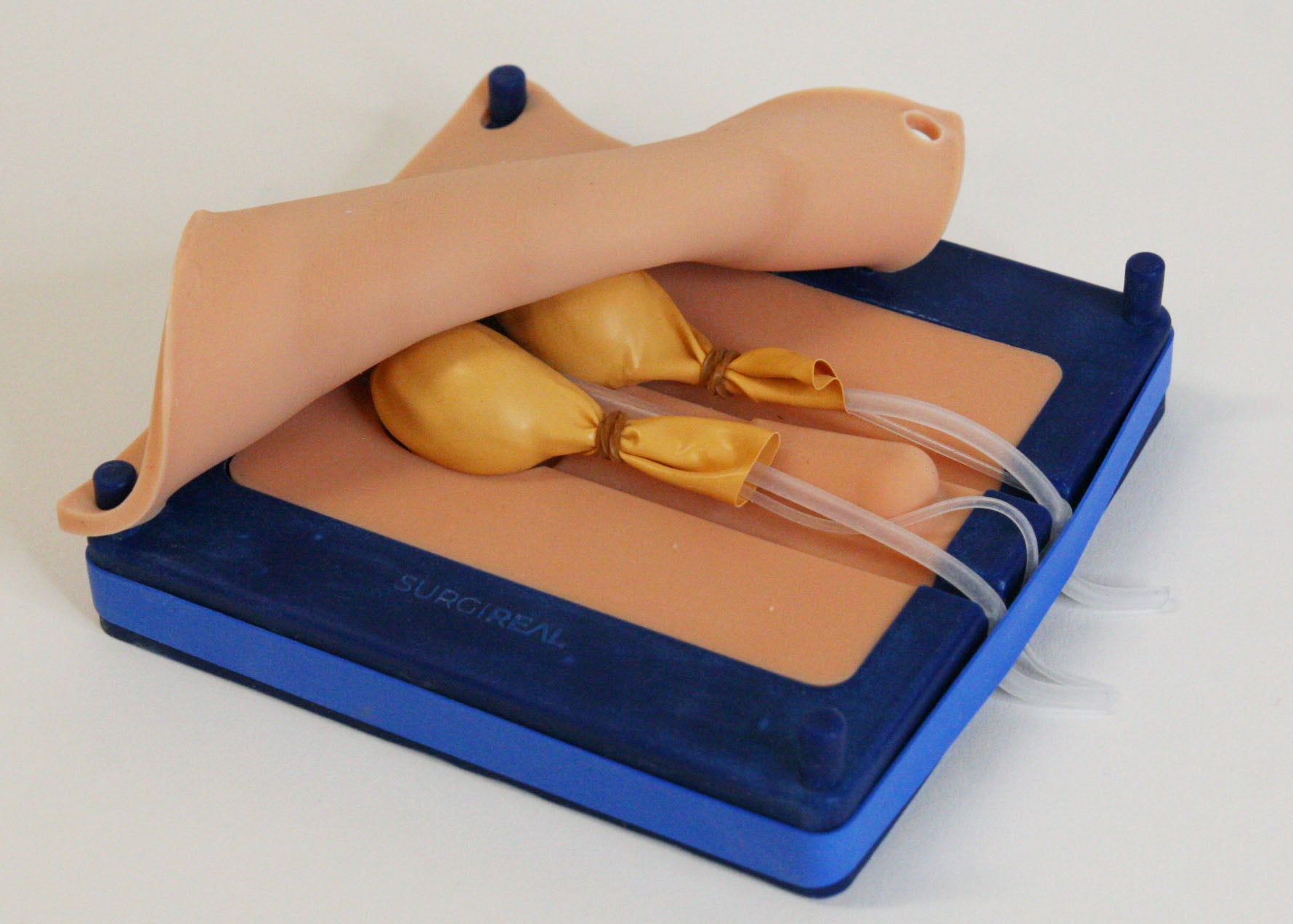
To learn more about our Canine Neuter Simulator click here.
Surgical skills are nurtured and perfected through careful observation and dedicated practice. Within the veterinary sphere, surgical procedures are among the most common reasons for vet visits—chief among these would be neutering and spaying procedures. Neutering, also commonly known as castration and fixing, is medically termed orchiectomy or gonadectomy. This is the procedure to surgically remove canine male testicles in order to control canine overpopulation, as well as provide various health and behavioral benefits to the dogs, extending the span of life and reducing aggressiveness. This will be one of the most important skills for veterinary surgeons to master in their practice as they will be called to perform it on a weekly if not daily basis.
As a quick overview, the surgical procedure includes applying the proper amount of anesthesia, oxygen, and isoflurane levels which should be monitored and administered appropriately, then placing the canine patient in the correct position before beginning the incision, being careful to maintain sterile practices at all times. For pediatric male dogs, a scrotal incision is made, however, in adult male dogs, both the pre-scrotal or scrotal methods can be employed. Exposing the median raphe, the incision should be central to the scrotum, and gentle pressure is applied to the surrounding tissue to excise the testicles. Both testicles are removed from the same central incision. Minimal subcutaneous tissue should be removed, otherwise, it may lead to dead space and hinder smooth entry into the abdomen. Always remember to not pull too tightly crushing the sutures. Linea alba, subcutaneous and subcuticular tissues should all be closed snugly, but not in an overlapping or crushed manner.
Reading through anatomy and practical surgical textbooks can provide some basic theoretical knowledge about the various physiological structures and their respective location, but they do not provide any sort of muscle memory or procedural memory necessary to mastering such surgical skills. Theoretical learning also often fails to encompass the vast number of possible variations that occur depending on the breed, size, and age of the dogs. Real hands-on practice is what will produce genuine competence and confidence. Once you have gained some form of practical experience, your level of confidence will proportionally increase. It is no wonder that the first surgical procedures performed are often filled with the most trepidation and anxiety, as exhibited by cold sweats and shaky hands. Much like driving a car, one can watch and read all about driving and the mechanics of an automobile, yet the actual technical learning occurs mostly on the road. If even getting a driver’s license requires both a knowledge and road test, how much more should veterinary surgeons get the most practice possible? SurgiReal supplies students and faculty alike with a number of excellent practice tools to increase hands-on surgical exposure.
Of course externships, internships, and volunteering at various neutering/spaying centers would be most beneficial to gaining real-life exposure to such practices. However, when students and professors do not have access to such opportunities at any given moment, SurgiReal’s top-of-the-line practice kits come in very handy. There are simulative products for canine neuter simulation, as well as many other veterinary surgical procedures.
The Canine Neuter Simulator allows students and instructors to practice the canine neuter procedure without any of the extraneous work. The testes each have two simulated vessels to replicate the vas deferens and the vascular supply and are covered with a pouch layer to mimic the tunica albuginea. The reusable base has a raised ridge that represents the penis for palpation purposes and a tube that represents the urethra. When covered with lubricating gel, the testes can be advanced for a pre-scrotal approach. They can then be excised through either a closed or an open technique. The skin incision can be closed after the procedure thanks to the stretchy nature of the non-toxic, non-hazardous silicone material. For additional usage, replacement skin and testes can be purchased separately for added training on this essential procedure. This handy kit is portable, sanitary, and can be used in any kind of setting. For professors and students alike it is a versatile and useful tool to have on the go. For instructors and faculty members, this canine neutering kit could prove especially practical for in-class demonstrations, cutting both cost and resources in terms of coordinating and cleaning after a live demonstration. Investing in such tools will definitely help students gain greater experience and confidence for future surgical success both during exam sessions and in live clinical settings.
To learn more about our Canine Neuter Simulator click here.
REFERENCE
ASPCApro, 2023, Spay/Neuter Training Reference Guide for Veterinarians, A resource guide for your on-site ASPCA Spay/Neuter Alliance training program.
